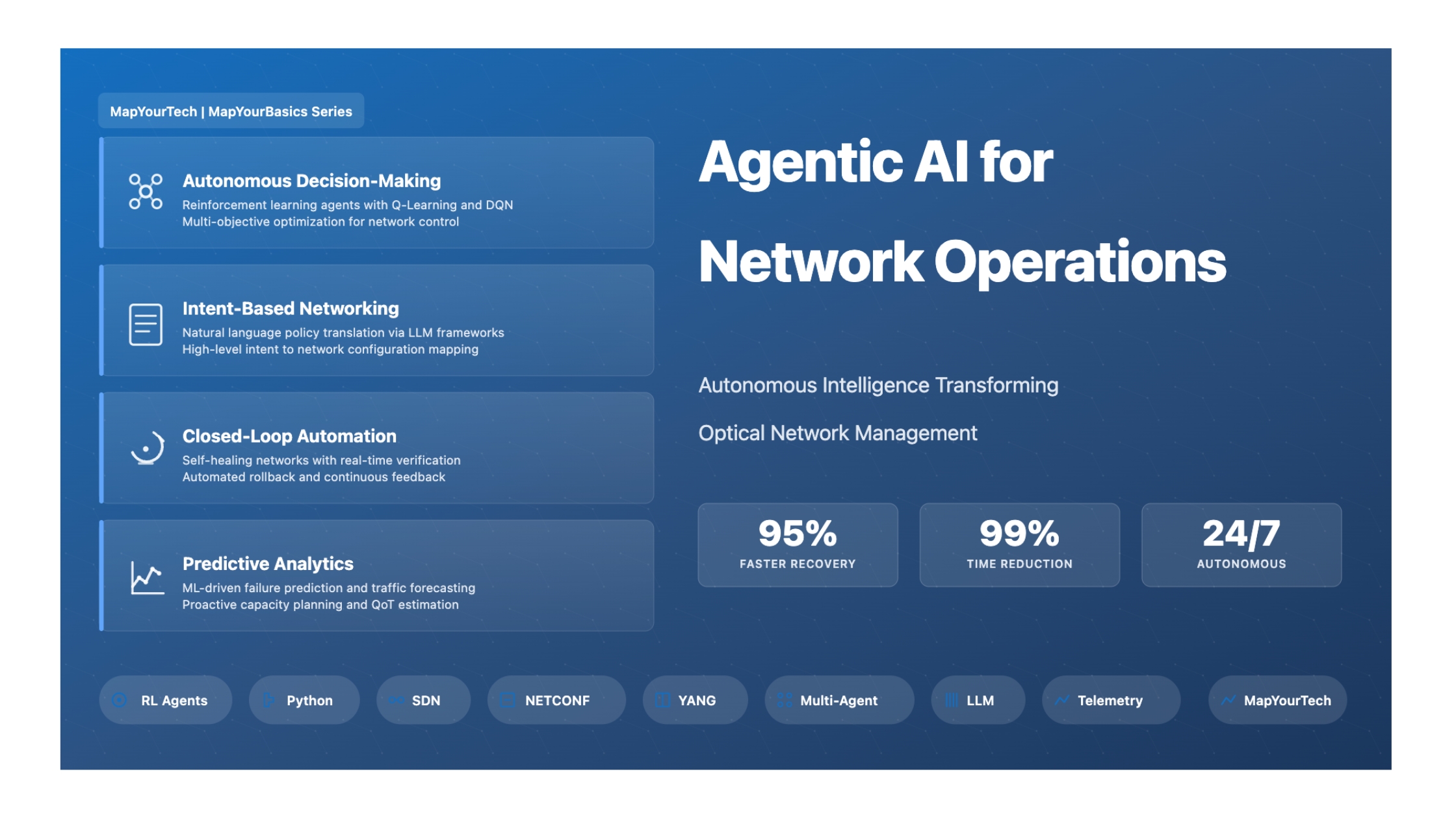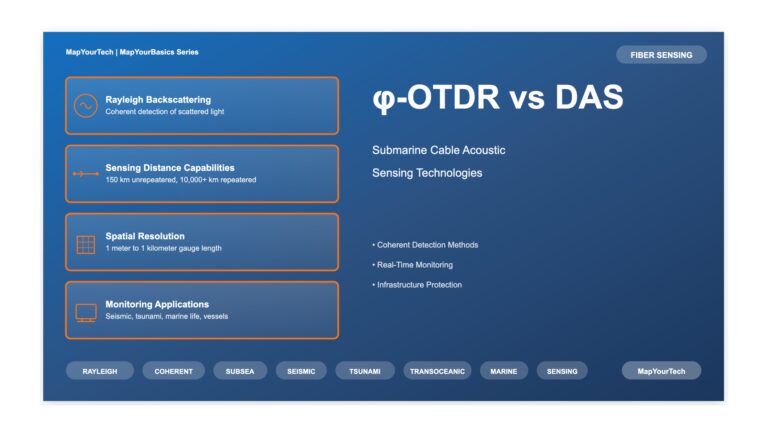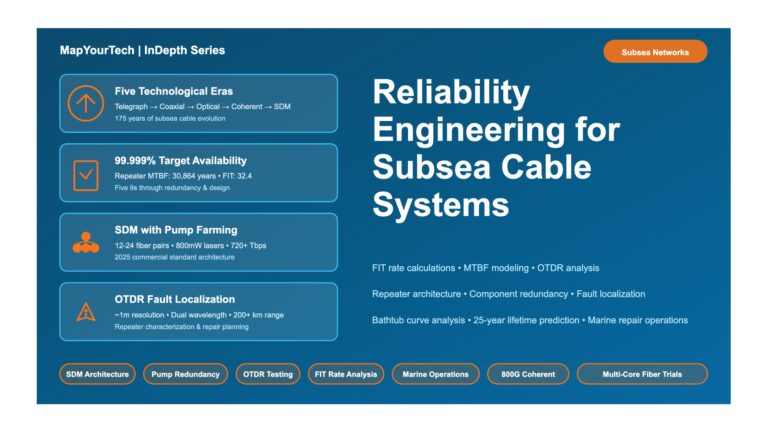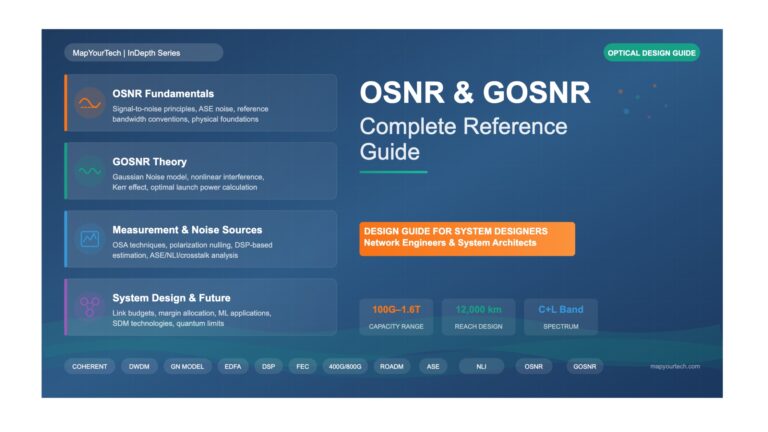22 min read

Agentic AI for Network Operations
Transforming Optical Networks Through Autonomous Intelligence
Fundamentals & Core Concepts
The telecommunications landscape is experiencing a paradigm shift as optical networks evolve from manually-managed systems to intelligent, self-governing infrastructures. Agentic AI represents the next frontier in network automation, promising systems capable of autonomous decision-making with minimal human supervision. Modern optical networks face unprecedented challenges: exponential bandwidth growth driven by cloud computing, video streaming, IoT, and AI workloads; increasing architectural complexity from disaggregated multi-vendor environments; and operational demands for real-time adaptability and continuous optimization.
Traditional network automation relies on predefined scripts and static rule-based systems that execute predetermined actions when specific conditions are met. While effective for routine tasks, these approaches lack the flexibility required for managing dynamic, complex network environments. Agentic AI fundamentally transforms this paradigm by introducing systems that can sense their environment through comprehensive telemetry, reason about network state using machine learning models, decide on optimal actions through reinforcement learning algorithms, and act autonomously with continuous learning and improvement capabilities.
Agentic AI in optical networking refers to autonomous artificial intelligence systems that can independently complete complex objectives with minimal human intervention. Unlike conventional AI/ML applications that assist human decision-making, agentic systems operate as independent agents capable of goal-oriented behavior, multi-step planning and execution, environmental interaction and adaptation, and self-directed learning and optimization. The emergence of Large Language Models and multi-agent frameworks has accelerated this evolution, enabling cross-domain orchestration and sophisticated network management scenarios.
Agentic AI System Architecture
Traditional AI/ML automation requires explicit programming for each scenario and provides recommendations for human operators. In contrast, agentic AI autonomously executes multi-step workflows, adapts to novel situations without reprogramming, and operates continuously with self-correction mechanisms.
The progression toward autonomous optical networks follows a maturity model spanning multiple levels. Basic automation handles repetitive configuration tasks through scripting. Assisted intelligence uses AI/ML to provide insights and recommendations to operators. Augmented intelligence enables systems to execute actions with human approval. Autonomous intelligence achieves independent operation within defined boundaries. Finally, fully autonomous systems operate with complete independence across all network functions. Current industry implementations predominantly operate at the assisted and augmented levels, with significant research focused on achieving true autonomy.
This evolution is driven by converging technological advances including the development of sophisticated reinforcement learning algorithms for sequential decision-making, the emergence of large language models capable of understanding operator intent and technical documentation, advances in real-time telemetry and streaming analytics platforms, the maturation of Software-Defined Networking controllers and orchestration platforms, and improved computational capabilities enabling edge-based AI processing.
Mathematical Framework
Agentic AI systems in optical networking are fundamentally grounded in mathematical frameworks that enable autonomous decision-making and optimization. The core mathematical foundation relies primarily on Markov Decision Processes (MDPs) and reinforcement learning theory, which provide the formal structure for modeling sequential decision-making under uncertainty.
In the context of optical networks, the agent-environment interaction is formalized through an MDP tuple consisting of states representing the complete network configuration including topology, traffic patterns, link utilization, and performance metrics; actions encompassing wavelength allocation decisions, routing path selections, power level adjustments, and modulation format configurations; reward functions quantifying objectives such as maximizing throughput, minimizing latency, reducing blocking probability, and optimizing energy efficiency; and transition probabilities modeling network dynamics and uncertainty.
Reinforcement Learning Cycle in Network Operations
The agent's goal is to learn an optimal policy that maps states to actions, maximizing expected cumulative reward over time. Core algorithms employed include Q-Learning for learning action-value functions in discrete state-action spaces, commonly applied to routing decisions and wavelength assignment; Deep Q-Networks combining Q-learning with deep neural networks to handle high-dimensional state spaces; Policy Gradient methods for directly optimizing policy parameters in continuous action spaces; and Actor-Critic architectures combining value-based and policy-based approaches for improved stability and efficiency.
While reinforcement learning drives autonomous decision-making, supervised learning models serve critical supporting functions within agentic systems. Quality of Transmission prediction models use neural networks to estimate link performance metrics before path establishment. Traffic forecasting employs recurrent neural networks and Long Short-Term Memory units to predict bandwidth demands and enable proactive resource allocation. Failure prediction models leverage Support Vector Machines, Random Forests, and neural networks for classifying network elements at risk of failure. Performance monitoring systems use regression techniques to estimate physical layer parameters from monitoring data.
Many network operations are formulated as optimization problems that agentic AI systems must solve. These include routing and wavelength assignment problems for minimizing blocking probability subject to capacity and continuity constraints, resource allocation problems for maximizing network utility under quality of service requirements, and power optimization problems for minimizing energy consumption while maintaining performance targets.
Implementing these mathematical frameworks in production networks faces challenges including high-dimensional state and action spaces requiring deep learning approximations, non-stationary environments where network conditions constantly evolve, sparse and delayed rewards complicating learning processes, and the need for sample-efficient algorithms to avoid excessive network disruption during training.
Types & Components
Agentic AI systems for network operations comprise multiple specialized components working in concert to achieve autonomous network management. Understanding these distinct types and their architectural integration is essential for implementing effective solutions.
Single-agent systems employ a centralized AI agent controlling the entire network domain through a global network view and centralized decision-making. This architecture excels at global optimization and coherent policy enforcement but faces scalability limitations and single points of failure. The centralized approach is particularly effective for smaller networks or specific domains like wavelength management across a metro region.
Multi-agent systems deploy distributed agents managing specific network segments or functions. Industry research highlights multi-agent LLM frameworks enabling cross-domain orchestration, where specialized agents collaborate on complex tasks. Benefits include improved scalability through distributed processing, enhanced fault tolerance with no single point of failure, specialized expertise where agents develop domain-specific knowledge, and parallel execution capabilities. Challenges include coordination complexity, potential for conflicting objectives, and communication overhead between agents.
Perception Agents
Continuously monitor network state through telemetry streams, process multi-source data including SNMP, NETCONF, streaming telemetry, and optical performance monitoring, detect anomalies and performance degradations, and extract relevant features for decision-making agents.
Decision Agents
Evaluate network state and determine optimal actions using reinforcement learning policies, maintain models of network dynamics, perform multi-objective optimization, and implement intent-based networking by translating high-level goals into concrete actions.
Execution Agents
Implement decisions through network APIs and controllers, interact with SDN controllers and network orchestrators, perform configuration management via NETCONF/RESTCONF, verify successful action execution, and handle rollback in case of failures.
Learning Agents
Continuously improve system performance through model training and updates, manage experience replay and training data, perform online and offline learning, and adapt to changing network conditions and traffic patterns.
Coordination Agents
Manage communication between specialized agents in multi-agent systems, resolve conflicts between competing objectives, maintain consistency of global network state, and orchestrate complex multi-step workflows across domains.
A comprehensive agentic AI platform integrates several essential components. The telemetry and data infrastructure provides real-time network monitoring through streaming telemetry protocols, time-series databases for historical data storage, and data preprocessing and feature extraction pipelines. The AI/ML engine houses trained models for prediction and decision-making, reinforcement learning agents with policy networks, supervised learning models for supporting tasks, and model versioning and lifecycle management capabilities.
The orchestration and control layer includes SDN controllers for network programmability, intent-based networking platforms translating high-level policies, NETCONF/YANG for standardized device management, and workflow engines for complex multi-step operations. The knowledge base maintains network topology and resource information, historical performance data and patterns, learned policies and decision rules, and operator-defined constraints and objectives.
Natural language interfaces powered by large language models enable operator intent specification in natural language, automated log analysis and troubleshooting assistance, documentation query and technical support, and translation between human intent and machine-executable configurations. The verification and validation framework provides simulation environments for policy testing, formal verification of critical decisions, performance monitoring and anomaly detection, and human-in-the-loop oversight mechanisms.
Effects & Impacts
The deployment of agentic AI systems fundamentally transforms optical network operations, delivering measurable improvements across multiple dimensions while introducing new considerations for network operators and engineers.
| Impact Area | Traditional Approach | Agentic AI Approach | Improvement |
|---|---|---|---|
| Network Configuration | 30 minutes per device | Automated in seconds | 99% time reduction |
| Fault Detection & Resolution | 4-8 hours average | Minutes to self-heal | 95% faster recovery |
| Performance Optimization | Days per network segment | Continuous real-time | Ongoing optimization |
| Traffic Prediction | Reactive capacity planning | Proactive allocation | Reduced congestion |
| Service Delivery | Days of delays | Minutes to provision | $$$$s saved per service |
Agentic AI dramatically enhances network reliability through predictive maintenance capabilities that identify potential failures before they occur, self-healing mechanisms that automatically detect and remediate issues without human intervention, fast reroute capabilities achieving sub-second recovery times, and continuous performance monitoring with proactive optimization. The development of self-healing networks represents a paradigm shift in network resilience, with systems continuously monitoring, analyzing, detecting issues, and initiating corrective actions to drastically reduce downtime.
Real-world implementations demonstrate significant improvements in network availability. Systems employing closed-loop automation can maintain five-nines availability through automated protection switching, predictive component replacement, dynamic traffic optimization, and real-time quality of service management. A global service provider using closed-loop automation reported the ability to dynamically provision additional wavelengths, balance traffic loads, and reroute critical services automatically when high-traffic events are detected.
The financial impact of agentic AI extends across multiple cost categories. Operational expenditure reductions include reduced manual labor for routine operations, decreased mean time to repair through faster fault resolution, improved resource utilization reducing overprovisioning, and lower training costs as systems become more autonomous. Capital expenditure optimization benefits from improved network planning and capacity forecasting, reduced need for redundant infrastructure through intelligent management, and extended equipment lifespan through predictive maintenance.
Revenue enhancement opportunities emerge from faster service delivery enabling new revenue streams, improved customer satisfaction through better quality of service, ability to offer premium guaranteed-performance services, and support for innovative network-as-a-service models. Case studies indicate potential savings of thousands of dollars per incident in troubleshooting costs and hundreds of dollars per network change through automation.
The introduction of agentic AI fundamentally transforms the role of network engineers and operators. Rather than eliminating positions, the technology shifts focus from routine operational tasks to strategic planning and design, exception handling and complex problem-solving, algorithm development and AI system training, cross-functional collaboration on automation initiatives, and continuous learning and skill development. Engineers increasingly function as architects and supervisors of intelligent systems rather than manual operators.
This transformation creates new skill requirements combining traditional optical engineering expertise with programming proficiency in Python and automation frameworks, understanding of machine learning and AI concepts, familiarity with data analytics and visualization, knowledge of SDN and network programmability, and ability to work with intent-based networking paradigms. The evolution represents an elevation of the profession rather than its replacement, with humans maintaining ultimate oversight and decision authority for critical operations.
Despite significant benefits, agentic AI deployment introduces important challenges. Trust and transparency concerns arise from the black-box nature of complex AI models, requiring robust verification frameworks and explainable AI approaches. Integration complexity involves adapting to existing legacy infrastructure, managing multi-vendor environments with varying API support, and ensuring secure communication between AI components and network elements.
Data dependencies create vulnerabilities where system performance heavily relies on high-quality telemetry data, poor data quality significantly impairs model accuracy, and data privacy and security considerations must be addressed. Safety and reliability imperatives demand rigorous testing before production deployment, fallback mechanisms for AI system failures, human oversight for critical decisions, and compliance with regulatory requirements. Initial investment costs include significant upfront expenses for infrastructure and training, requirement for specialized expertise during implementation phase, and ongoing costs for model maintenance and updates.
Techniques & Solutions
Implementing agentic AI in optical networks requires a sophisticated combination of machine learning techniques, automation frameworks, and networking technologies. This section explores the key approaches enabling autonomous network operations.
Reinforcement learning forms the backbone of autonomous decision-making in agentic systems. Q-Learning algorithms enable agents to learn optimal policies for discrete action spaces, commonly applied to wavelength assignment and routing decisions. The agent learns action-value functions representing expected rewards for taking specific actions in given network states. Deep Q-Networks extend this capability to high-dimensional state spaces by using neural networks to approximate Q-functions, enabling handling of complex network topologies with numerous parameters.
Policy gradient methods directly optimize policy parameters, particularly effective for continuous action spaces such as power level adjustments and modulation format selection. Actor-Critic architectures combine value-based and policy-based approaches, with the critic evaluating actions and the actor optimizing policy parameters. These methods demonstrate superior performance in dynamic resource allocation, routing optimization under changing conditions, network self-configuration and self-optimization, and contention resolution in burst switching networks.
Closed-loop automation represents the pinnacle of autonomous network management, where systems detect issues, analyze root causes, implement corrections, and verify outcomes without human intervention. The architecture comprises multiple integrated layers beginning with the perception layer employing comprehensive telemetry collection from all network elements, real-time data processing and feature extraction, anomaly detection through unsupervised learning, and pattern recognition for normal and abnormal behavior.
Closed-Loop Automation Workflow
The reasoning layer performs root cause analysis using causal inference, impact assessment predicting consequences of potential actions, decision-making through reinforcement learning agents, and conflict resolution for competing objectives. The action layer executes through SDN controller integration for programmable control, automated configuration management via NETCONF/YANG, dynamic resource allocation and traffic engineering, and rollback mechanisms for failed actions. The verification layer ensures proper operation through continuous monitoring of action outcomes, performance metric validation against expected results, feedback to learning agents for model improvement, and human notification for significant deviations.
Successful closed-loop implementation requires high-fidelity network models for accurate state representation, robust telemetry infrastructure with sub-second data collection, well-designed reward functions aligning with business objectives, comprehensive safety constraints preventing harmful actions, and gradual rollout with human oversight during initial phases.
Intent-Based Networking revolutionizes network management by allowing operators to specify desired outcomes rather than detailed configurations. Large Language Models enable understanding of natural language operator commands, translation of high-level intents into technical specifications, contextual interpretation considering network state and constraints, and generation of executable configuration scripts. The IBN workflow processes operator intent through multiple stages including intent parsing and semantic understanding, validation against network capabilities and constraints, translation to network policies and configurations, automated deployment across relevant network elements, and continuous verification ensuring network state matches intent.
Practical applications include service-level specification where operators define latency, bandwidth, and reliability requirements without specifying technical details, security policy enforcement through high-level security intents automatically translated to access controls and monitoring, resource optimization by specifying efficiency goals with the system determining optimal configurations, and troubleshooting assistance where operators describe problems in natural language receiving automated diagnosis and remediation suggestions.
Supporting the decision-making capabilities of agentic systems, various specialized machine learning models address specific network challenges. Quality of Transmission prediction employs neural networks trained on historical link performance data to estimate metrics before path establishment, enabling proactive routing decisions and reducing connection blocking. Traffic forecasting utilizes recurrent neural networks and LSTM architectures to analyze temporal patterns and predict future bandwidth demands, facilitating proactive capacity planning.
Failure prediction and anomaly detection combine multiple techniques. Supervised learning classifies network elements at failure risk based on monitored parameters using Support Vector Machines, Random Forests, and neural networks. Unsupervised learning identifies subtle performance degradations and unusual patterns through clustering algorithms, Isolation Forests, and One-Class SVMs. These predictive capabilities enable shift from reactive maintenance to proactive intervention, reducing unplanned outages, optimizing maintenance scheduling, and improving overall network availability.
Software-Defined Networking provides the foundational infrastructure enabling agentic AI systems to execute decisions and control network behavior. The separation of control plane from data plane allows centralized intelligence to manage distributed network elements. SDN controllers expose northbound APIs for AI agents to interact with the network and southbound protocols for device configuration and monitoring. Integration with agentic AI enables dynamic path computation and traffic engineering, automated wavelength and spectrum allocation, real-time power level adjustments and equalization, and network slicing for service differentiation.
Modern SDN architectures support standardized data models through YANG enabling consistent network representation, NETCONF/RESTCONF protocols for reliable configuration management, streaming telemetry for high-frequency monitoring data, and open APIs facilitating integration with AI platforms. Leading implementations include ONOS providing comprehensive optical network control, OpenDaylight offering modular SDN controller framework, and vendor-specific solutions with AI-enhanced capabilities.
For large-scale networks, distributed control methods balance the benefits of coordination with the need for scalability and fault tolerance. The dynamic domains approach organizes the network into logical control regions that adjust based on network state and coordination requirements. Each domain maintains local decision-making authority with coordination only when actions affect neighboring domains. This architecture minimizes communication overhead while maximizing parallelism, enables fault-tolerant operation where loss of communication degrades but doesn't halt control, and scales effectively to large networks through hierarchical organization.
Implementation requires fluctuating channel lists tracking which channels may be affected by control operations, local timers ensuring no element waits too long between adjustments, run state propagation methods for sequencing control operations, and decision functions determining when elements can safely execute changes. This approach proves particularly valuable in mesh networks and dynamic optical networks where multiple nodes may simultaneously require adjustments.
Practical Applications
Agentic AI delivers transformative value across the entire optical network lifecycle, from planning and deployment through operations and maintenance. Real-world implementations demonstrate the technology's maturity and practical viability.
Network Planning & Design
Automated topology optimization, capacity planning through traffic prediction models, Quality of Transmission estimation for path feasibility, and multi-objective optimization balancing cost, performance, and reliability. AI models analyze historical data and growth projections to recommend optimal network expansions.
Automated Provisioning
Zero-touch service activation, dynamic bandwidth allocation based on demand, automated wavelength assignment and routing, and configuration template generation through Jinja2. Provisioning times reduced from hours to minutes with reduced human error.
Performance Monitoring
Real-time optical performance monitoring with AI-enhanced analytics, automated OSNR and BER estimation, anomaly detection identifying subtle degradations, and predictive alerts before service impact. Continuous monitoring enables proactive optimization.
Predictive Maintenance
Component failure prediction based on monitoring trends, automated maintenance scheduling optimization, soft-failure detection identifying gradual degradation, and proactive component replacement before service disruption. Reduces unplanned downtime by 60-80%.
Self-Healing Networks
Automatic fault detection and localization, autonomous traffic rerouting during failures, fast protection switching achieving sub-second recovery, and root cause analysis with automated remediation. Dramatically improves network resilience and availability.
Traffic Engineering
Dynamic routing optimization based on real-time conditions, load balancing across multiple paths, congestion avoidance through predictive traffic shaping, and adaptive modulation format selection. Maximizes network utilization while maintaining quality of service.
Security Enhancement
Anomaly-based intrusion detection, physical layer attack identification including fiber tapping, automated security policy enforcement, and behavioral analysis for threat detection. AI identifies suspicious patterns invisible to traditional rule-based systems.
Automated Documentation
Auto-generated network topology maps, configuration change tracking and version control, automated compliance reporting, and natural language summaries of network state. Reduces documentation burden while improving accuracy.
Network Slicing
Dynamic slice creation and management, automated resource allocation per slice, SLA enforcement with guaranteed performance, and network-as-a-service enablement. Supports diverse 5G and enterprise use cases with isolation guarantees.
A global enterprise deployed agentic AI for managing 400G optical links between data centers. The system continuously monitors OSNR, BER, and power levels across all wavelengths. When performance metrics deviate from optimal ranges, the AI agent automatically analyzes root causes, considering factors including environmental conditions, fiber aging, and traffic patterns. Based on this analysis, the system autonomously adjusts optical power levels, modulates transmission parameters, and if necessary, initiates protection switching to backup paths.
Results demonstrated 95% reduction in manual troubleshooting time, proactive identification of 85% of potential failures before service impact, improved average link OSNR by 1.5 dB through continuous optimization, and reduction in unplanned outages by 70%. The system paid for itself within 18 months through operational savings and improved service reliability.
A Tier-1 service provider implemented closed-loop automation for its national optical backbone spanning hundreds of nodes and thousands of wavelengths. The agentic system handles traffic prediction and capacity planning, automated wavelength provisioning and routing, real-time performance optimization, predictive maintenance scheduling, and automated protection switching during failures.
The implementation followed a phased approach starting with read-only monitoring and alerting, progressing to human-approved automated actions, then supervised autonomous operation, and finally fully autonomous operation with human oversight. Results included 60% reduction in service provisioning time, 40% improvement in network resource utilization, 80% reduction in mean time to repair for fiber cuts, and $5 million annual operational cost savings.
Successful agentic AI deployment requires careful planning and execution. Begin with comprehensive baseline measurement documenting current performance metrics and operational costs. Identify high-value use cases where automation delivers maximum benefit with acceptable risk. Develop robust telemetry infrastructure ensuring high-quality, high-frequency data collection. Establish simulation and testing environments for safe model training and validation. Define clear success criteria and measurable key performance indicators.
Implementation should follow gradual progression starting with monitoring and alerting only, introducing human-approved automated actions, enabling supervised autonomous operation, and transitioning to full autonomy with oversight. Maintain human-in-the-loop oversight for critical operations, implement comprehensive logging and audit trails, establish rollback procedures for failed actions, and conduct regular model retraining and performance evaluation.
Organizational preparation includes training engineering staff on AI concepts and tools, establishing cross-functional teams combining networking and data science expertise, defining governance frameworks for AI decision-making, and ensuring alignment with business objectives and regulatory requirements. Success depends equally on technical implementation and organizational readiness.
Agentic AI represents a fundamental transformation in how optical networks are designed, deployed, and operated. The technology has matured beyond research prototypes to production-ready systems delivering measurable value. Industry momentum continues to accelerate with major equipment vendors integrating AI capabilities, standards bodies developing frameworks for AI-driven network management, service providers deploying autonomous systems at scale, and ongoing research advancing the state of the art.
The convergence of several technological trends amplifies the impact of agentic AI. Software-defined networking and disaggregated architectures provide programmable infrastructure essential for AI control. Advanced telemetry and streaming analytics enable the real-time data collection required for autonomous decision-making. Large language models and multi-agent frameworks open new possibilities for natural language interaction and cross-domain orchestration. Edge computing capabilities allow distributed AI processing closer to network elements.
For network operators and engineers, the message is clear: agentic AI is not a distant future possibility but a present reality transforming the industry. Organizations that embrace this technology gain competitive advantages through improved operational efficiency, enhanced service quality, faster innovation cycles, and reduced operational costs. Those that delay risk falling behind as automated networks become the industry standard.
The path forward requires investment in both technology and people. Technical infrastructure must evolve to support AI-driven operations through comprehensive telemetry, programmable control planes, and robust computing platforms. Equally important is workforce development, equipping engineers with the skills to design, deploy, and oversee autonomous systems. The future belongs to organizations that successfully integrate human expertise with artificial intelligence, creating networks that are simultaneously more autonomous and more aligned with human intent.
Agentic AI does not eliminate the need for skilled network engineers; rather, it elevates their role from tactical operators to strategic architects of intelligent systems. The most successful professionals will be those who combine deep networking expertise with understanding of AI principles, programming proficiency, and the vision to reimagine what networks can achieve. The optical networking revolution is not just about new technology but about fundamentally new ways of thinking about network operations and the relationship between human intelligence and artificial intelligence in managing critical infrastructure.
Unlock Premium Content
Join over 400K+ optical network professionals worldwide. Access premium courses, advanced engineering tools, and exclusive industry insights.
Already have an account? Log in here




